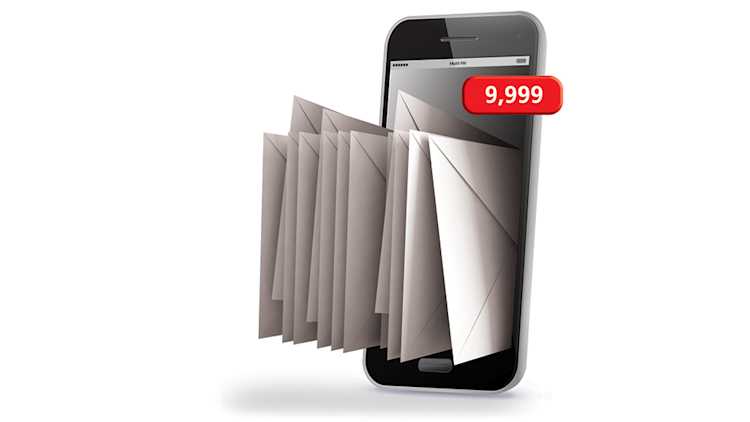5 tips for managing your farm business emails

It’s not that long ago that getting an email was actually kind of exciting – validating, even. That was before the avalanche of spam, notifications and unwanted email blasts started clogging our inboxes. One study found that on average, we are spending as much as 2.5 hours a day reacting to an average of 120 emails a day. Over 25% of our working day is spent on email.
Getting on track with your email process is going to take a bit of time and effort; it’s an investment in saved time.
Ignoring email for a few days means wading through a maze of messages to find those that are relevant. On the other hand, reacting to every email as it arrives is disruptive and distracting for yourself and those around you. Both approaches are productivity and efficiency killers.
Let’s look at some empowering but simple steps you can take to get out from under those 14,000 unread emails languishing in your inbox. Full disclosure – getting on track with your email process is going to take a bit of time and effort, but this investment will pay back 100-fold in saved time.
1. Choose the right email service
Many of us simply accepted the email address we were given by our internet service provider. In my case, my internet provider was a small company called Amtelecom so my email address was pgredig@amtelecom.net. When my ISP changed to Eastlink, my old email address became obsolete. This is inconvenient and disruptive for a business email address.
Many people choose their own independent email service like Gmail or Outlook to maintain the same email address over time. There are other considerations when deciding where to set up your email accounts. Different email services offer a range of features and making the best choice depends on how you use email in your business and personal life. The amount of free data storage, how robust the spam filter is, the layout and ease-of-use are features that only you can assess. Gmail and Outlook are the two most common email service options but there are at least a dozen free services to choose from. An internet search to learn the pros and cons of each will help you make the right choice.
2. Organize your accounts
Most of us have more than one email account and there are different philosophies regarding how to best organize them to avoid wasting time or missing important messages. Some email services (Gmail, for example) allow you to forward emails from numerous accounts to one inbox so you can see everything that has come in by checking one file.
Some people like to have different email accounts for different purposes and intentionally keep them separate. One email address for social media, a different email account for work and another email account for personal communication with friends and family. This can be confusing but it allows you to prioritize which emails you engage with. If you are in work mode, you can focus on that account inbox and not be distracted by pictures from Italy sent by your college roommate.
3. Start fresh – delete or archive stale emails
If you have hundreds or thousands of emails sitting in your inbox, it’s an overwhelming chore to go through them all and clean up the inbox. In general, emails older than one month are probably stale and can be deleted, but if you are nervous about doing that you can archive all of them so if you really needed to you could retrieve them and find that specific message from four years ago.
4. Manage incoming email
A great spam filter is essential to pull unwanted emails from your inbox. You can also reduce spam by being diligent in “unsubscribing” to incoming content that’s getting past your spam filter. It makes a big difference. Look for the unsubscribe link at the bottom of unwanted newsletters or marketing emails.
5. Discipline is required
There are many different strategies for email service set-up and account management, but most experts agree it’s important to have a daily plan for email and stick to it. Being reactive to every email that hits your phone or computer is a time-waster – consider turning off or snoozing the notifications that show up on your phone or computer screen. A better approach is to set aside one or two dedicated times through the day to check and deal with the inbox. Try an hour first thing in the morning and 30 minutes after lunch.
The second level of discipline comes into play once you open the email. Once you’ve opened it, it cannot remain in the inbox! Force yourself to delete, archive, label or move the email so that it is dealt with one way or another.
These suggestions represent a starting point. Once you get more comfortable with the features available through your email service, you can create folders or labels to help you organize incoming emails and use specific filters to make your emails more searchable. Once you’ve decided on which email service to use, start looking into the features that will help optimize your email strategy. It may seem like a chore, but it’s worth it. Especially if the experts are right about how much of our time is consumed by email.
From an AgriSuccess article by Peter Gredig.

How much money does a Canadian farmer need to retire? According to farm finance and transition experts, it depends primarily on the intended lifestyle and a personal definition of financial security.